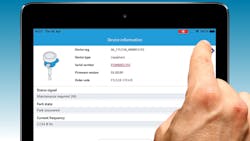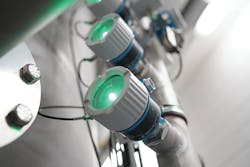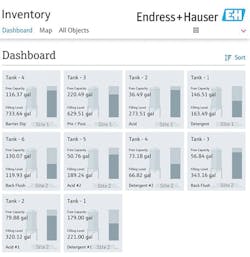In any work environment, especially when labor markets are turbulent, a key driving factor for high employee recruitment and retainment is mutually understood and agreed expectations between workers and managers. And with so many technological improvements in the process automation space, it can be easy for processors to become caught up with advanced performance enhancements and lose sight of the basic procedures required to keep plants humming efficiently.
Remembering these points is critical in operational settings because the instrumentation around a facility can make or break staff experience, directly impacting the ease and safety with which plant personnel can conduct their work. Today’s modern smart instruments provide many new capabilities to address these and other issues by providing more methods for diagnosing issues, better data sharing, and simpler instrument integrity verification.
This article will discuss a few of these modern advancements, along with the benefits they provide for personnel, then dive into the results of these improvements in action.
Online diagnostics increase reliability and uptime
Today’s instruments provide a plethora of diagnostic data, one area of notable improvement over instruments of yesterday. This capability is enabled by increasing support for digital communication protocols in both instruments and plant infrastructure. While most instruments used to provide only a single analog 4-20mA output proportional to the process variable, they now can routinely communicate all sorts of diagnostic and process data, enabling predictive maintenance for decreased failures. This functionality empowers plant personnel to increase process efficiency and reduce downtime because instrumentation now has the means to self-assess and report health conditions.
To make best use of this trend, some plants are implementing programs for communicating diagnostic data to reliability team members, who can use the information to proactively address issues, reduce unscheduled outages, and improve operational performance. For example, an intelligent level transmitter can detect early signs of failure, and a smart temperature instrument can sense when its accuracy is fading and corrects itself. These devices can make their diagnostic information available to a monitoring host, such as an asset management system (AMS) or a distributed control system (DCS), which in turn can generate alerts informing plant personnel of the issues, facilitating maintenance and troubleshooting.
Bluetooth connectivity speeds and simplifies maintenance
Many of these intelligent instruments can generate verification reports natively, improving data integrity and the ease of confirming reliability. In addition to transmitting this data to central host systems for 24/7 monitoring, the information can often be checked wirelessly via Bluetooth-enabled smartphones and tablets through an app, making it easy for technicians to examine instrument health as part of their routine rounds and facility inspections.
With proper authorization, they can also change tags and other configuration parameters, without an industrial instrument communicator or any network configuration, because the mobile device handles the communication using Bluetooth (Figure 1).
Using a Bluetooth app, plant personnel can connect to instruments from upwards of 30 feet away, eliminating the need to open electrical panels, remove protective housing covers, and scramble through tight or dangerous spaces to access hard-to-reach devices. This empowers technicians to work with familiar technology, and it alleviates the need to keep dedicated wired plant communicator devices’ batteries charged, device type manager (DTM) catalogs current, and firmware updated.
Commissioning with apps and guided wizards
Bluetooth apps often include commissioning wizards to walk technicians through instrument startup from beginning to end, ensuring all configuration procedures are followed. This is especially valuable when working with safety integrity level (SIL) instrumentation to ensure devices in a safety instrumented system function as intended. For example, overfill protection is often provided by level instrumentation rated for SIL service.
Bluetooth interfaces can also include guided procedures for in-situ testing, providing traceable verification logs because records are stored in instruments’ local memory. This method is compliant with NAMUR NE107 and other standards for instrumentation verification, and it does not interrupt the process because it eliminates the need for device removal and process downtime.
Instead of manually writing a report every time a setting is changed or an instrument is checked, technicians can generate an “as found” instrument configuration file before the change, and an “as left” file afterwards with the push of a button, eliminating questions about what parameters were changed and when. And when anomalies or issues are detected, Bluetooth interfaces provide easy-to-follow recommendations for remedial actions.
The ability to access and modify configuration parameters, view documentation and manuals, and monitor instrument health through an app empowers plant personnel to perform all troubleshooting and maintenance services in a single trip to an instrument, without the need to track down DTM files. The following case studies show how these capabilities benefit users in everyday operational scenarios.
Results: construction materials on time
At industrial facility construction sites, the continuous availability of materials stored in silos—such as gypsum, lime, plaster, and others—is critical for maintaining tight project schedules. A large contractor updated its previous procedures for inventory—which involved periodic manual checks—with cellular-enabled, battery-powered level sensors that continuously publish level data in the cloud.
These cloud-enabled level transmitters provided the contractor with a continuous dashboard display of precise tank levels (Figure 2), and with alerts when the level of material in any silo dropped below a configured point, triggering a notification to remind staff to purchase more material. Additionally, these instruments communicate ambient temperature—helping staff ensure suitable storage conditions for material—GPS coordinates, and battery life data.
In combination with a web-based inventory management software, the level measurement system provided full transparency throughout the contractor’s multiple sites, and across all steps of the supply chain from production to distribution to site-specific storage. The inventory management software was used to generate orders and subsequent deliveries automatically, including provision of GPS coordinates for route planning, reducing supplier operating costs and carbon footprint.
SIL tests in a thionyl chloride application
When working with SIL applications, time windows for carrying out proof tests are often becoming shorter due to more stringent regulations, while the number of maintenance staff to support this type of work remains the same or lower than in the past.
A chemical processor working with thionyl chloride previously required yearly removal of its SIL overflow sensing instrumentation, but it was struggling to keep up with demanding annual offline test requirements, while maintaining satisfactory production levels. Additionally, removal had to be executed cautiously because of the risk of exposure to the hazardous chemical.
The processor responded by replacing its outdated instrumentation with Endress+Hauser Liquiphant FTL51B vibronic level switches (see Figure 3), empowering plant personnel to perform routine online testing and extend the interval between comprehensive offline SIL proof tests to three years.
The online tests can be triggered right at the device with the touch of a button, and the results are available to view using the SmartBlue app via any Bluetooth-connected iOS or Android smartphone or tablet. Additionally, issues of concern—such as unusual frequency changes—detected via the instruments’ Heartbeat condition monitoring diagnostic technology are highlighted in the app.
Additionally, the app can be used to monitor the oscillation frequency of the fork and other sensor diagnostic information. A steady increase in frequency, for example, can signal the presence of corrosion on the fork, providing a warning prior to failure.
In addition to increasing the intervals between offline tests, these new capabilities helped support the processor’s predictive maintenance program, reducing downtime-caused losses and improving plant safety.
Dairy CIP
Clean-in-place (CIP) systems in dairy facilities circulate chemicals to sanitize pipes, tanks, and process equipment to prevent bacteria from growing and compromising the health and safety of product. CIP is advantageous because it eliminates the need to manually dismantle and clean equipment. The chemicals used—such as detergents, acids, and return caustic solutions—are stored in drums and fed through pipes to the CIP system, requiring diligent monitoring of chemical levels to ensure sufficient supply.
To ease the task of maintaining chemical supply across its facilities nationwide, a multi-site dairy operator installed Endress+Hauser Micropilot FWR30 sensors on tanks and totes, providing cloud-connected monitoring and remote inventory management and alerting. The operator used the Netilion Inventory digital services cloud to track information and monitor all tanks enterprise-wide at a glance within a web dashboard (see Figure 4).
When a tank level drops below a defined point, the operator receives a notification, prompting the purchase of additional chemicals to refill a tank. Additionally, the cloud platform provides alerts if issues occur within the CIP system, including faulted valves, leaks, spills, and more. This helps ensure functional safety, efficient operation, and high product quality.
Embrace advancement
Modern instruments and connected services can vastly enhance plant performance and increase production, but associated improvements to user experience and safety cannot be overlooked. More and more, plant personnel expect user-friendly technology in the workplace to help accomplish their tasks, at the level they are used to with smartphones and other everyday electronic devices.
Prospective employees often gravitate toward workplaces that embrace advancement to help perform job functions and meet production expectations safely and effectively, and all staff benefit from simple and intuitive instrument maintenance interfaces. By adopting this technology on the plant floor, and empowering workers with associated tools, employers can increase talent retainment, while improving plant safety and operational efficiency.
This story originally appeared in the October 2022 issue of Plant Services. Subscribe to Plant Services here.




